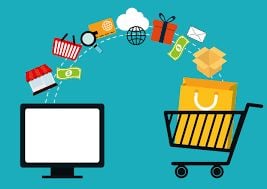Online shopping continues to grow as traditional retailers struggle to keep up. E-commerce has already transformed the way that people buy things like books and music, putting retailers like Borders out of business while others, like Barnes and Nobles, struggle to stay afloat. The latest targets in this expansion look to be fashion and food, and businesses like India’s Flipkart are leading the charge.
As traditional fashion retailers like Sears struggle to stay in business, the internet continues to move in on the sector. If you look at things globally this trend is even starker, the Indian company Flipkart bounded onto the scene with $1.4 billion dollars in backing back in June of 2017 and is looking to grow even larger in 2018. Flipkart’s the newest player in a market that already includes American giant Amazon and Chinese titan Tencent, all working to signal a global shift in the way people shop for every product they use.
The fact that online giant Amazon purchased the grocery chain Whole Foods is the biggest sign that the internet is moving in on space traditionally dominated by brick and mortar grocery stores. People have long assumed that food would be one of the areas that were best equipped to resist going online because people don’t want to wait days to get food that isn’t as fresh as it can be.
But Amazon’s Dash buttons and its new integration into the Whole Foods chain may signal that while online retailers don’t feel they can conquer grocery stores with one swoop, they can chip away at the market by slowly encouraging people to move online with some purchases while shifting their in-person shopping to retailers owned by online giants.
Still, while some fear a global monopoly held by one retailer the fact that India, China, and America all have their own e-commerce giants shows that there still is some room for competition in the modern market. This is especially true in the world of food, where local sources and concerns are more important than in any other sector.
The other trend to look out for is how this latest push by e-commerce sites will continue to impact local businesses. If grocery stores start to go digital from India to America, then there is no telling just how large the global e-commerce marketplace can get. Everyone needs to buy food and clothes, and right now some of the last holdouts who haven’t made the leap online might be pushed to go all-in if e-commerce sites can offer them a better experience with these most basic shopping concerns.




